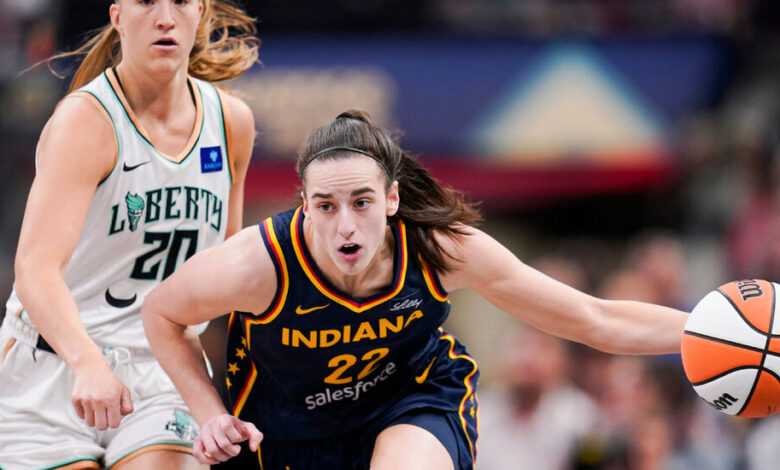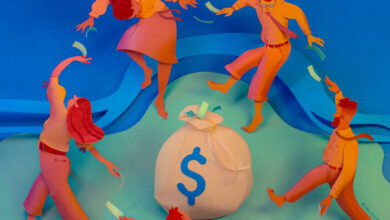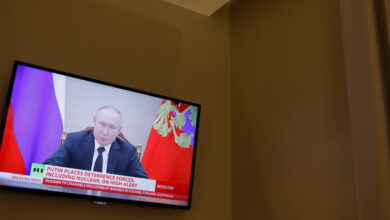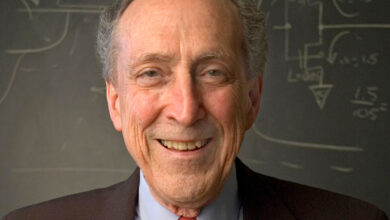What Caitlin Clark’s Arrival Could Mean for WNBA’s Business

The business of women’s basketball is booming. And the start of the 2024 W.N.B.A. season has many wondering if the sport is entering a new economic era.
The arrival of stars like Caitlin Clark, the former University of Iowa phenom who is now a rookie with the Indiana Fever, has boosted interest and ticket sales. All the league’s teams will fly charter for the first time this season, team sponsorships are growing, and marquee players are racking up endorsement deals. A new TV deal could fill its coffers and further elevate the league’s profile.
But there are still obstacles the league needs to overcome before attaining the kind of stature that other professional sports leagues have. The average W.N.B.A. salary is around $120,000, much lower than the N.B.A.’s, and the relatively low pay has traditionally prompted even the highest-earning players to play overseas during the league’s off-season in order to make extra money. The league has long had stars, but it has struggled to market their skills and personalities to a mass audience.
How the W.N.B.A. capitalizes on the current moment — and approaches its more prominent place in the media landscape — could have a significant effect on the league’s future.
A chance to capitalize.
More than 18 million people, a record, watched the University of South Carolina beat Clark and Iowa in the women’s N.C.A.A. tournament final this year, up from the roughly 10 million who watched the title game in 2023, which was also a record. This year, for the first time, more people watched the women’s final than the men’s.
Clark has had a unique effect. In her four years at Iowa, she broke the Division I scoring record for men and women and led the Hawkeyes to consecutive national title games. She also helped sell out arenas and boost TV ratings, and has become one of the most visible stars in all of college sports. According to a March poll conducted by Seton Hall University’s School of Business, Clark was the most well-known college basketball player in the country, with 44 percent of Americans saying they had heard of her.
Supporters of the W.N.B.A. are hoping that the growth in the college game translates to the pros. Last year’s finals averaged 728,000 viewers per game, the highest in 20 years.
Players say they can sense a difference already. Sue Bird, the former Seattle Storm and University of Connecticut star, said in an interview that compared with 2002, when she entered the league, the W.N.B.A. is taken more seriously by fans. The common sentiment back then, Bird said, was that “you were taking a step down” coming from playing college basketball.
“They were accustomed to a certain standard in college, and they’re now seeing it in the W.N.B.A.,” Bird said.
And so far, the interest in Clark seems to have carried over to the league. A record 2.5 million people watched the W.N.B.A. draft on April 15, when Clark was selected No. 1 overall. Three of the Fever’s first four games are being nationally televised, on ESPN, ESPN2 and ABC, and the other was on Amazon Prime. As a testament to the league’s growing popularity, the Bay Area will get a W.N.B.A. team in 2025, and another team is reportedly planned in Toronto.
W.N.B.A. players — even stars — don’t make a lot.
When the Indiana Fever picked Clark in the draft, many — including President Biden — were shocked to learn her starting salary: $76,535.
Clark’s college endorsements — valued at more than $3 million, according to On3, a site that tracks name, image and likeness deals for college athletes — and ones she has signed with since getting to Indiana make her base salary a small portion of her overall compensation.
Base salaries in the W.N.B.A. range from about $64,000 for rookies drafted in the third round to about $240,000 for veterans. Out of roughly 144 players in the league, 22 make more than $200,000 annually, and 78 make less than $100,000, according to Spotrac, a site that tracks players’ contracts.
Players can earn more, with bonuses for those who win individual awards and whose teams are successful. The league pays a small, rotating cohort of players a total of $1 million each season to participate in leaguewide marketing partnerships.
But lucrative endorsements are not a reality for the bulk of the league’s players, and some see the promise of sponsorships as the wrong answer to improving player compensation.
“The new messaging point around a player in the new rookie class is, ‘Don’t worry about the top pick, because she can make up to a half-million dollars,’” said Terri Jackson, executive director of the W.N.B.A. players’ union.
In turn, players have looked overseas, playing for teams in countries like Russia, Turkey, China and Australia that pay more than the W.N.B.A. Brittney Griner had been playing in Russia when she was detained for nine months.
Today, about half of W.N.B.A. teams share ownership with an N.B.A. team, and in some cases facilities and front offices. That includes the Fever, who share ownership and facilities with the Indiana Pacers. Ownership of the W.N.B.A. itself is still split between the collective 30 N.B.A. teams and 12 W.N.B.A. teams. In 2022, the W.N.B.A. announced $75 million of new investments from more than two dozen investors, including N.B.A. and W.N.B.A. team owners.
New deals could change things.
The leagues remain worlds apart when it comes to revenue. But proponents of higher pay for W.N.B.A. players point out that they make a lower share of league revenue than N.B.A. players do, 10 percent compared with around 50 percent.
Negotiations for media rights, a key driver of the revenues of sports leagues, are underway for the N.B.A. and W.N.B.A. The two leagues have generally negotiated rights deals together.
The current deal expires at the end of the 2024-25 N.B.A. season. At that point, the W.N.B.A. could choose, for the first time, to separate its agreement from the N.B.A.
The league must prioritize continuing to expand its fan base and market its stars, as the N.B.A. did with Larry Bird and Magic Johnson in the 1980s, said Len Elmore, a former N.B.A. player and a senior lecturer at Columbia University’s Sports Management Program.
“Television rights are what’s catapulted N.B.A. salaries,” Elmore said. “It comes down to having those players, and it comes down to TV.”
The current collective bargaining agreement between the W.N.B.A. and the union that represents the players governs players’ compensation. Chiney Ogwumike, a forward for the Los Angeles Sparks, said the recent growth of the W.N.B.A. was buttressing the players’ case that they should receive a greater share of league revenue.
“The numbers are supporting players finally being rewarded as drivers of revenue,” she said in an interview.
Endorsements are a wild card.
As the profile of the college game has risen, stars have earned millions through endorsements. For instance, Angel Reese, now in her rookie season with the Chicago Sky, had N.I.L. deals worth a reported $1.8 million while at Louisiana State University.
But more endorsement deals are happening with W.N.B.A. players. Clark is reportedly signing a $20 million deal with Nike. The company is also making a signature shoe with A’ja Wilson, the Las Vegas Aces star.
Research has consistently demonstrated that women’s sports receive a tiny fraction of the media attention that men’s sports do, limiting their reach and ability to attract new fans. That has changed in recent years, with global sponsorships for female athletes increasing 22 percent in 2023, according to SponsorUnited, which tracks company sponsorships and deals.
But now, there’s an upside for companies in that pursuit. Compared with leagues like the N.B.A. and the N.F.L., “it’s not as cluttered,” said Sarah Lane, the chief marketing officer at CarMax, which became a partner of the league in 2021.
Bird said she was optimistic that the current crop of rookies, combined with the league’s existing stars, would draw more attention — and sponsorships — to the W.N.B.A.
The current stars, Bird said, “have a certain value both in their play and their marketability, and that will just grow the pot and the pie for everybody else.”



